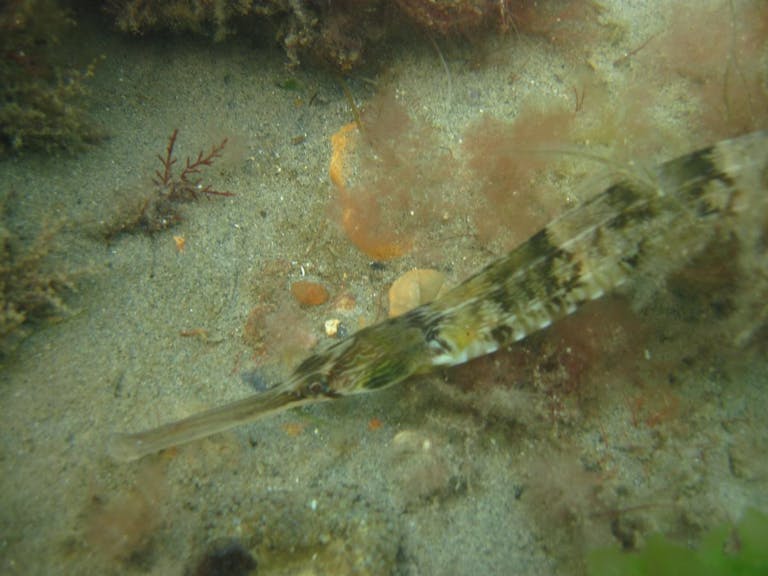Greater Pipefish in Selsey
There are several things that make the Greater Pipefish distinctive and hard to mistake for other creatures. They have a long thin body with an elongated snout. The snout can be over half the size of the head and is used to pick up small crustaceans and fish larvae that they like to feed upon. The Greater Pipefish is the most common species in the UK but you can find several others. One easy way to tell is if you look at the head, the Greater Pipefish has a bump or hump behind the eye.

Like the seahorse they do not have scales. Instead the Greater Pipefish is covered by segmented plates that give them an angular appearance, on close inspection they seem to be armoured. They are masters of camouflage with their bodies being either green or brown on top with a lighter underbelly and dark bands along the length. This enables them to blend into the seaweed and it is often the snout you see first.
They can grow to be about 45cms long and have been found in water as deep as 110m. We find them off the beach at Selsey in patches of weed. At the end of a sunny day at low water check when swimming as they can come in remarkably close to the beach.
Males carry the eggs in a brood pouch to protect them, they can carry up to 400 eggs at a time and perhaps not all from the same female. The babies remain inside for about 5 weeks before emerging as perfect miniature version as small as 1.7cms in length.
If you have any questions about the Greater Pipefish found off Selsey, then contact Anya Frampton, Selsey's resident SSI Marine Ecology Instructor at Mulberry Marine Experiences.
Images courtesy of Anya Frampton and Steve Frampton
